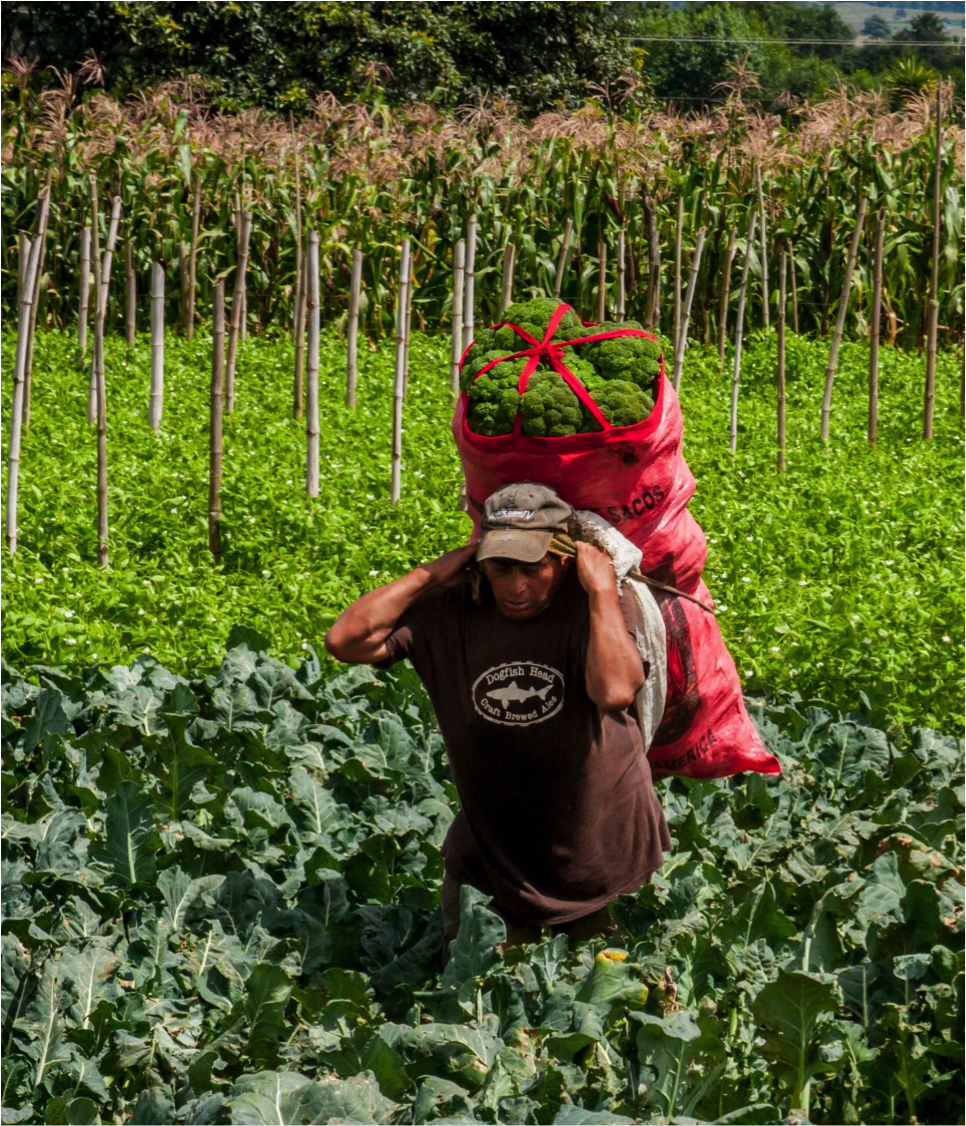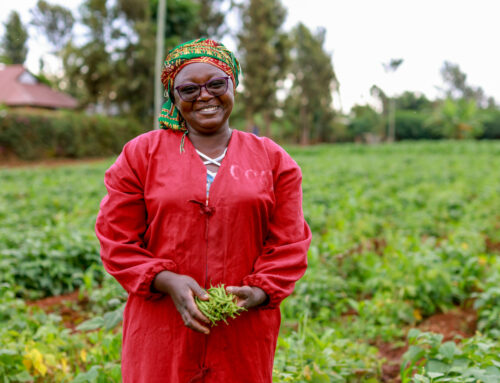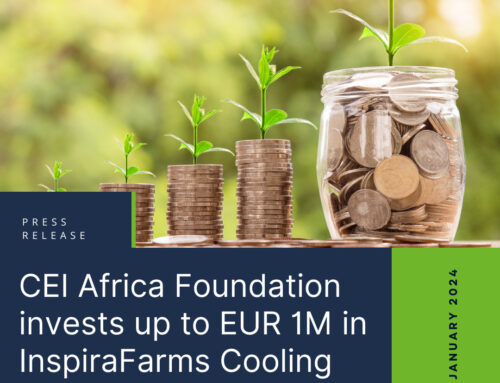Keys and characteristics to solve the limitations in food value chains.
It’s estimated that more than 5 billion people are in the base of the pyramid (BoP), the largest, but poorest socio-economic group. More than one billion people have moved out of extreme poverty in recent decades, but according to World Bank data, 80% of those that remain impoverished live in rural areas. According to World Bank data, 80% of the 770 million people living in extreme poverty are in rural areas and 64% work in agriculture.
The lack of infrastructure of small farmers in rural places
According to the UN’s International Fund for Agricultural Development, the world’s estimated 500 million smallholder farms produce 80% of the developing world’s food. However, to a large degree, these farmers operate in inefficient informal economies. For instance, the lack of storage infrastructure means that farmers consistently lose a significant portion of their crop or produce to spoilage—and they sell their remaining crops and produce into oversupplied markets when prices are at their lowest. Lack of access to market information and high transaction costs also prevents low-income farmers to understand markets opportunities and better practices, or access to affordable services or products.
At the same time, given the geographical, infrastructural, and socio-economic barriers present in most developing countries, mainstream businesses are unwilling or unable to address low-income underserved market demands, largely based in rural and remote places. The limited purchasing power of rural populations and the lack of effective marketing and communication channels in rural areas are some of the reasons that companies often find those markets are not attractive enough for selling.
New sector of companies that are committed to social responsibility
Nevertheless, there’s an emerging segment of businesses that believe that the unmet needs of low-income populations present a huge and untapped business opportunity. We are witnessing “the growth of a unique class of enterprises that strive to create social impact while maintaining focus on financial sustainability” (Intellicap, 2017). Intellicap defines them as “businesses that aim to generate profits and create a positive social impact. These enterprises directly improve the lives and livelihoods of low-income populations through a number of ways: by increasing their access to critical products and services; by improving their economic productivity, output quality; or by helping establish market linkages between low-income producers and formal value chains. Social enterprises create awareness and disseminate information in underserved markets”
How can impact-driven startups transform smallholder farming and offer a private-sector solution that solves the needs of low-income communities? In such areas, poor farming practices, combined with inefficient processing, storage, and supply chain infrastructure lead to food losses that affect supply and pricing. For an impact entrepreneur, these challenges in the food value chain represent business opportunities.
In East Africa alone, smallholder farming accounts for almost 75% of agricultural production and more than 70% of total employment. Intellicap estimates that most impact enterprises are in the agribusinesses space, and are working on providing access to agricultural inputs, storage and processing facilities or building market linkages. Others enterprises are developing mobile and web applications that can provide farmers with information on best practices, weather, and access to credit.
Intellicap estimates that over 31% of social enterprises focused on the agricultural sector focus on creating market linkages – providing end-to-end support including access to financing for farming inputs like fertilizers and seeds, training in best practices, and access to technology, storage, and transportation. Also, more than 75% of the agricultural produce from East Africa is exported with little or no processing; this presents a whitespace for development of local processing industries.
What are the key elements and considerations needed to succeed as an impact business working in agriculture and targeting low-income markets? Here some recommendations sourced from sector experts C. K Prahalad, A. Karnani and Intellecap, as well as from our own experience as impact entrepreneurs.
Market size
The size of the market is determined by the number of people willing to pay a price for a product that is higher than the cost of producing that product. The market is not necessarily determined by the number of people who need the product.
Affordability
Low-income consumers have low purchasing power. They can afford low- priced products, but also having competing demands to cover with their income. This doesn’t mean that low-income populations cannot become a customer segment for your company. It does mean that products affordable will be needed large price and cost reductions. Reducing quality is a way for reducing costs. Also diverse product presentation, smaller size or portion can facilitate purchasing power. Reducing quality doesn’t mean producing a low quality or dangerous product. Quality consists of many dimensions, including performance, features, reliability, conformance, durability, serviceability, availability, convenience, and customization. Consequently, a business needs a deep understanding of the price-quality trade-offs being made by the target customers.
Marketing & Communication
Low-income consumers tend to be informed, build trust and rely on their decisions by the power of word of mouth. More than 80% of consumers in low-income markets rely on recommendations from a post-purchase experience of friends and family before making their purchases. Seeing a friend use a product is reassuring. Indeed, the less a consumer knows about a product and the more conspicuous the choice, the more the consumer is likely to care about the opinions of others. It is also worth keeping in mind that these consumers tend to view local TV channels and read local newspapers rather than national ones.
Education
Consumers in low-income markets tend to lack the information to fully appreciate the value of the products being offered. A major cost for impact businesses serving these markets is that of educating their potential consumers to be able to assess the value and perceived risks of adopting a solution, which results in behavior change.
Engagement
Impact enterprises can engage with their customers through a mix of both products and services. This can be a way to facilitate customer’s purchasing decision. For instance, many businesses working in the agricultural sector are providing end-to-end support across all stages of the value chain. Services such as financial support—through extended payment terms, as well as rent-to-own or pay-as-you-go models—capacity building, technical assistance, and market linkages services can not only facilitate the purchasing decision but can also be a way to generate additional income streams.
Distribution
Distribution is the main challenge to reaching low-income consumers, especially in rural areas, where there’s no networks or very inefficient ones. Creating effective distribution channels can be very expensive. One way to do so at lower costs is to unbundle the value chain, and collaborate with or piggyback on other actors, such as wholesalers.
Focus
While trying to combine socially useful products with company profitability is a major challenge in itself, initiatives for selling to low-income consumers often make this even harder by adding other social and environmental objectives. To simplify things, just pick the impact objectives that give more value to your target consumer.
Creative business models
Building business models for entering low-income markets requires real insights; simply adapting successful business models for emerging markets will not suffice. The idea is to create markets out of unmet needs; not to create needs in existing markers.
Patience
For most impact enterprises, achieving break-even takes around 5-8 years. In those initial years, most of these businesses can have revenues less than US$100,000, and margins can be very low. To manage these timeframes, get closer to the sector that shares your values and understands the impact and the time needed. For instance, look for financial support through patient investors and lenders who can offer suitable financing conditions for your business.



